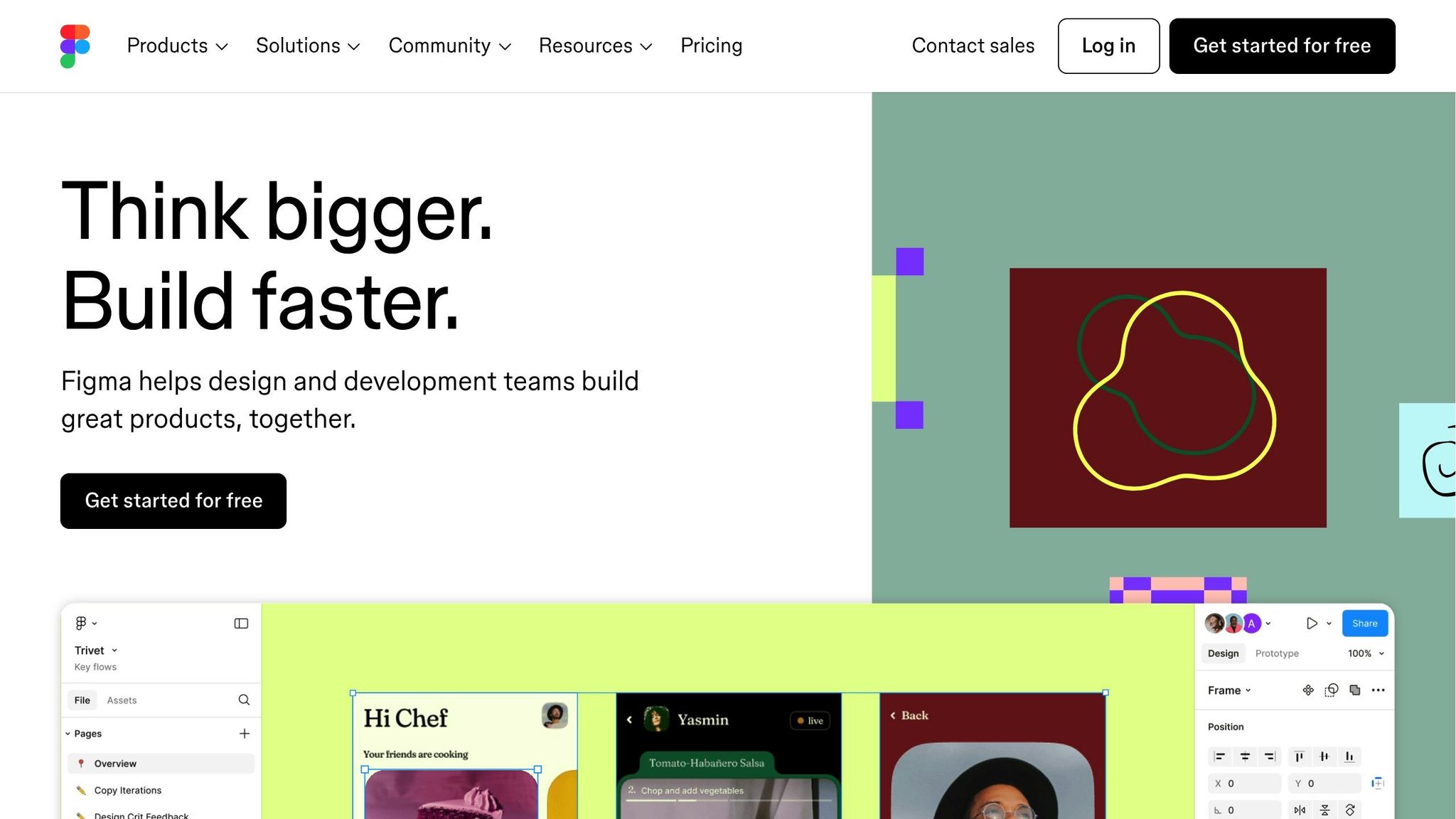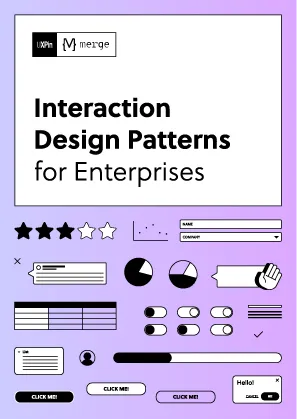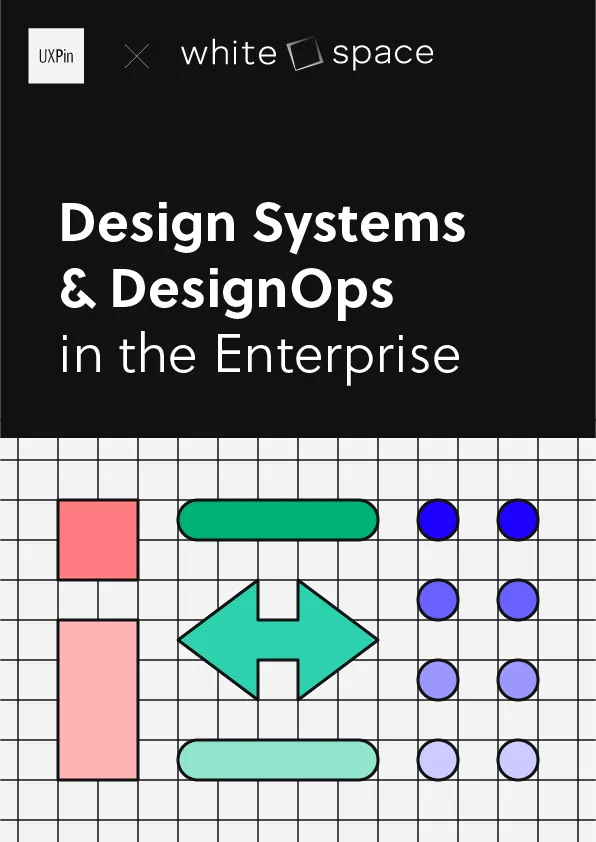Component-based design is a method of breaking down user interfaces into reusable, self-contained parts called components. This approach improves consistency, efficiency, and scalability in digital product development. Major companies like Atlassian, Airbnb, and Salesforce have adopted this method to save time and enhance productivity.
Key Takeaways:
- Reusable Components: Build once, use everywhere for consistent design.
- Atomic Design: Organize components into five levels: Atoms, Molecules, Organisms, Templates, and Pages.
- Design Tokens: Use tokens (e.g.,
color.primary.500) for consistent styling across platforms. - Component Libraries: Plan, document, and test components to boost efficiency by up to 50%.
Quick Facts:
- Airbnb reduced design-to-development handoff time by 35%.
- Consistent interfaces improve task completion rates by 39%.
- Companies using component libraries report a 30-50% boost in efficiency.
This guide covers everything from building component libraries to scaling them, testing designs, and using tools like React, Storybook, and design-to-code workflows. Ready to streamline your design process? Let’s dive in.
Atomic Design: What is it and why is it important in 2024?
Key Concepts of Component-Based Design
Component-based design changes the game for digital product development by breaking interfaces into smaller, reusable parts. This method helps teams work more efficiently and ensures products can grow and adapt over time.
How Modular Design Works
Modular design splits user interfaces into separate, reusable parts called components. A great example is Material-UI‘s button component. It can work by itself or alongside other components, all while keeping a consistent look and function.
Key aspects of modular design include:
- Building components that function on their own
- Defining clear relationships between components
- Maintaining consistent styles and behaviors
- Simplifying updates across the entire product
This approach creates a strong foundation for structured systems like Atomic Design.
Using Atomic Design
Brad Frost’s Atomic Design method organizes components into five levels, making even the most complex design systems easier to handle.
| Level | Description | Common Examples |
|---|---|---|
| Atoms | Basic UI elements | Buttons, inputs, labels |
| Molecules | Small groups of elements | Search bars, form fields |
| Organisms | Larger UI sections | Navigation headers, product cards |
| Templates | Page layouts | Article layouts, product pages |
| Pages | Specific instances | Home page, contact page |
Airbnb’s Design Language System (DLS) is a real-world example of Atomic Design at work. By adopting these principles, Airbnb cut design-to-development handoff time by 35% and improved design consistency by 20% across their platform. Michael Fouquet, Airbnb’s Design Systems Lead, helped create over 200 reusable components, showcasing how scalable this approach can be.
Design Tokens Explained
After organizing components, design tokens ensure consistent styling throughout the system. These tokens act as the building blocks for design values, like colors, spacing, and typography.
Why use design tokens?
- Fewer Errors: Companies see up to 40% fewer style-related bugs after adopting design tokens.
- Faster Updates: A single token update can change styles globally.
- Improved Collaboration: Designers and developers share a unified language for design elements.
For instance, instead of hardcoding a color like #007bff, teams use tokens like color.primary.500. This makes it easier to update themes and maintain consistency across platforms.
Creating Component Libraries
Building component libraries requires careful planning and attention to detail. By using modular components and design tokens, these libraries transform into scalable systems. Companies with well-maintained component libraries often see a 30-50% boost in design and development efficiency. A well-structured library also ensures smooth integration with larger systems.
Planning Your Components
Start by conducting a UI audit to spot patterns and eliminate redundancies. This step helps you establish a clear hierarchy for components and focus on what needs to be developed first.
When planning your components, keep these key factors in mind:
- States and Variants: Define how components behave in different scenarios (e.g., default, hover, active, disabled).
- Naming Conventions: Stick to consistent patterns like
Category-ComponentName-Variant. - Props and Properties: Identify configurable options to make components flexible for various use cases.
- Documentation: Clearly outline usage guidelines and technical details.
For inspiration, take a look at Microsoft’s Fluent Design System. It showcases how effective planning can ensure consistency across platforms.
Adding Components to Design Systems
Integrating components into your design system requires a structured approach. Salesforce’s Lightning Design System is a great example of how to do this effectively.
| Integration Phase | Key Activities | Expected Outcome |
|---|---|---|
| Documentation | Usage guidelines, code examples | Clear implementation path |
| Review Process | Design critiques, accessibility checks | Quality assurance |
| Version Control | Git-based management, changelog | Organized updates |
| Distribution | Storybook integration, package publishing | Easy access for teams |
Testing Component Designs
Thorough testing ensures your components work well across different contexts. After integration, rigorous testing confirms their reliability. Uber’s Base Web system is a great example – they use a detailed testing process that includes:
- Checking visual consistency across devices.
- Verifying functional behavior in all states.
- Ensuring accessibility compliance.
- Measuring performance impact.
- Testing cross-browser compatibility.
This approach helped Uber reduce time-to-market by 30%. They rely on tools like Storybook for isolated component testing, allowing teams to interact with components without needing a full application setup.
For accessibility, tools like Axe or WAVE can help ensure your components meet WCAG standards.
If you’re working on a large-scale library, automated testing is a must. Atlassian’s Design System team, for instance, achieved 90% test coverage with automated visual regression testing, cutting down on manual QA time significantly.
sbb-itb-f6354c6
From Design to Code
Transforming design concepts into functional code requires a structured approach that connects design and development. Data shows that teams using organized design-to-code workflows can cut UI component development time by 40%. This phase builds on earlier discussions about component design principles and dives into practical techniques for building and integrating these components.
Building React Components
React dominates the world of component-based development, with 74% of developers incorporating it into their projects. The focus here is on creating modular, reusable components that align with your design specs.
Here’s an example of how teams effectively structure React components:
import React from 'react'; import { tokens } from './tokens'; const Button = ({ label, onClick, variant = 'primary' }) => { return ( <button className={`button ${variant}`} onClick={onClick} style={{ backgroundColor: tokens.colors[variant], padding: `${tokens.spacing.small} ${tokens.spacing.medium}`, }} > {label} </button> ); }; export default Button; Design-Code Tools and Methods
Once your React components are ready, modern tools can simplify the design-to-code process and improve collaboration. UXPin Merge, for example, lets designers work directly with code components, reducing the usual friction during handoffs.
| Tool | Primary Use Case | Key Benefit |
|---|---|---|
| UXPin Merge | Code-backed prototyping | Use real React components |
| Storybook | Component documentation | Interactive testing environment |
| Zeplin | Design handoff | Automated style guide generation |
These tools help teams align better, ensuring designers and developers are on the same page regarding component behavior and styling.
Making Components Work Everywhere
To ensure your components function consistently across platforms, focus on compatibility and responsiveness. Cross-platform components should adapt to different devices while maintaining their core functionality.
For responsive design, consider practices like this:
import styled from 'styled-components'; const ResponsiveCard = styled.div` display: flex; padding: 1rem; @media (max-width: 768px) { flex-direction: column; padding: 0.5rem; } `; When targeting mobile platforms, React Native is a great choice. It allows you to use the same component library while tailoring components for platform-specific needs. This approach ensures consistency without sacrificing performance or user experience.
Growing Your Component System
As your design system evolves, scaling component libraries becomes essential to meet growing demands. A well-managed approach ensures your system stays efficient and cohesive. In fact, 69% of companies report improved collaboration between designers and developers through structured component management.
Large-Scale Component Management
Managing large-scale component libraries requires a structured approach, especially for organizations with multiple teams. Take Airbnb’s Design Language System (DLS) as an example. It enabled the company to scale from 10 to 100 product teams, ensuring design consistency while cutting feature development time by 30%.
Here’s a breakdown of strategies for managing large component libraries:
| Management Aspect | Implementation Strategy | Key Benefit |
|---|---|---|
| Centralization | Use a monorepo as a single source of truth | Easier version control |
| Documentation | Automate with tools like Storybook | Better knowledge sharing |
| Performance | Monitor with tools like Lighthouse | Improved load times |
| Compliance | Perform automated checks with SonarQube | Consistent code quality |
By centralizing resources, automating documentation, and keeping performance and compliance in check, you can scale your system without losing efficiency.
Updates and Version Control
Keeping your component library up to date is just as important as building it. Netflix’s "Nirvana" platform is a great example of how large-scale organizations handle dependencies effectively.
Here are some strategies to manage updates and versions:
- Semantic versioning: Clearly communicate updates and changes.
- Feature flags: Gradually roll out updates to minimize risks.
- Changelogs: Maintain detailed records of changes for easy reference.
- Automated testing: Run regression tests to catch potential issues early.
Material-UI’s strategy also stands out. They provide detailed migration guides and automated codemods for major updates, helping teams switch versions smoothly while ensuring backward compatibility.
AI Tools for Components
AI is reshaping how teams design and maintain component libraries. The BBC’s Global Experience Language (GEL) system demonstrates how AI can assist with tasks like component creation and accessibility testing.
Here are a few ways AI tools are being used effectively:
| Tool Category | Purpose | Example |
|---|---|---|
| Generation | Automating component code | GitHub Copilot suggestions |
| Accessibility | Running automated tests | Deque’s axe-core ML checks |
| Optimization | Analyzing performance | Adobe Sensei integration |
Figma’s AI-powered Auto Layout and variant features also make it easier to create consistent components. Meanwhile, Microsoft’s AI for Accessibility program is working on tools to identify and fix accessibility issues automatically.
While AI can handle repetitive tasks, it’s crucial to maintain human oversight. Regular audits ensure AI-generated components align with your design standards and meet quality expectations.
Next Steps
Start your journey by taking inspiration from strategies like Airbnb’s Design Language System, which cut inconsistencies by 35% and sped up time-to-market by 30%.
Begin with a detailed audit of your design elements. This will help you identify reusable components and plan your component library effectively.
Set up the right tools to support your workflow. For design, consider options like Figma or Sketch. For development, tools like Storybook are great, and for version control, Abstract or Git can streamline collaboration. If you’re starting fresh, UXPin’s Merge allows you to connect design and code directly.
Define your design tokens early on. These include key elements like color palettes, typography, spacing, and variations for each component. Documenting these ensures clarity and consistency.
Test your component library with a pilot project. This step will help you refine workflows and troubleshoot any issues before scaling up.
Hold bi-weekly cross-functional reviews. These meetings are essential for discussing updates, resolving challenges, and ensuring alignment across teams.
Put governance processes in place. This means creating clear guidelines, setting up review checklists, automating tests, and scheduling regular audits to keep everything running smoothly.
Incorporate AI tools to speed up component creation, explore variations, and improve performance. However, ensure human oversight to maintain quality and relevance.
Track your progress using metrics like development speed, design consistency, code reusability, and team productivity. These will give you a clear picture of how your system is evolving.
Follow these steps to build a strong component system before diving into additional best practices.
FAQs
Here are answers to some common questions about component-based design.
How do you convert Figma designs into React components?

Turning Figma designs into React components involves several steps:
- Analyze the design: Start by reviewing the component structure and hierarchy in Figma.
- Build React components: Create a React component structure that mirrors the Figma layout.
- Apply styles: Use tools like CSS-in-JS or styled-components to implement the design’s styles.
- Add functionality: Incorporate interactivity and state management as needed.
- Ensure responsiveness: Optimize the components for different screen sizes and performance.
Tools like Visual Copilot can simplify parts of this process by generating code directly from Figma layers and allowing for easy adjustments, including animations.
How is a component library different from a design system?
A component library is essentially a collection of reusable UI elements – like buttons, typography, and color palettes – designed to maintain visual consistency. A design system goes further, combining these UI elements with guidelines, standards, and detailed documentation. This added layer of structure helps streamline workflows. For instance, companies that adopt design systems often see reduced design and development time thanks to standardized practices.
What is a component library?
A component library is a central repository of reusable UI elements that promotes consistency across projects. According to a recent survey, 69% of companies using structured component libraries report better collaboration between designers and developers. The best libraries include clear documentation for each component and are regularly updated to stay compatible with current development practices.

